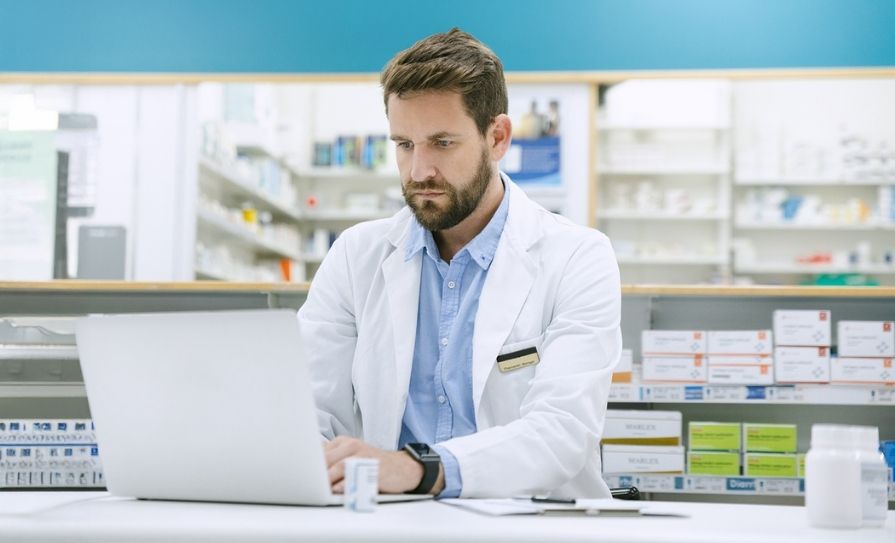I obviously haven’t tried this myself, but supposedly if you pick up a frog and drop it into a pot of boiling water, it will immediately jump out to save itself. However, if you take the frog and put it into a pot of cold water that you place over a gentle heat and slowly raise the temperature, the frog will stay where it is, ultimately boiling to death and possibly ending up with its legs in a Parisian sandwich. So what’s the relevance to pharmacy of this nugget of information about amphibicide? In fairness, I may be stretching things a little, even by my standards, but it’s undeniable that for anybody working in community pharmacy over the last 10 or more years we have seen a gradual increase in the ‘heat’ of the workplace. The gradual addition of more and more bureaucratic, operational and regulatory requirements has added to the stress of the job, but we’ve adapted our perception along the way to see our situation as ‘normal’, despite the thermometer being at 100 degrees.
When you take them and drop them into the steaming cauldron of a dispensary, their first reaction is to correctly sense the insanity for what it really is
By contrast, consider a new pharmacy graduate who has just gone from the spawning ground in his or her first year of a School of Pharmacy, through the tadpole stages of undergraduate years, until finally becoming a fully-formed pharmacist hopping out into world of work. When you take them and drop them into the steaming cauldron of a dispensary, their first reaction is to correctly sense the insanity for what it really is. For pharmacists like myself who have adapted over the last decade to the incremental increase in workload, try imagining that all of these extra changes had been introduced in one fell swoop. Let’s say that back in 2010, we opened the mail one morning to be instructed that in addition to everything we already did, starting immediately, we were also to do the following:
Get patient signatures on all DPS and LTI forms; monitor dispensing of diabetic strips to a set quota; check phased dispensing approvals; check ONS approvals; do a prescribed amount of annual CPD; handle all Motilium sales personally; apply for emergency LTI registration, ditto emergency DPS registration; handle consultations for morning-after contraception; deal with an ever-increasing number of ULMs; order all High-Tech products via a separate inefficient ordering process, and check in stock as it arrived; complete an annual Pharmacy Assessment folder; deal with more frequent calls from hospitals for patient medication histories; and maintain fridge and dispensary temperature logs. And of course — scan the bloody barcodes to keep some clueless Eurocrats happy.
So it’s absolutely no wonder whatsoever that a lot of new graduates land into this with a fresh pair of eyes, take a look at the madness, and decide to jump out to find a different career option, either in some other area of pharmacy, or something different entirely. There can obviously be other reasons for graduate unhappiness, such as inadequate breaks, lack of support staff, etc. Those problems have always existed (and should be addressed), but the effects are now felt more acutely than in the past due to the temperature of the pot. Turning down the cooker will be the tricky bit.
SUNNY SIDE UP
Sometimes, we make decisions that are carefully evaluated based on all available information and everything works out well. It’s always a possibility that some ‘unknown unknowns’ will scupper the best of predictions, but on the other hand, there are times that the dice rolls in your favour.
For instance, I had solar panels installed on the roof of my pharmacy premises just over a year ago. It’s a flat roof and well-exposed, apart from a few trees blocking low sun in the evening, so the installation was fairly straightforward. I got lucky with one feature of my electricity meter, which is that it’s the old-style meter with a wheel that goes around. Interestingly, that wheel can also go backwards! So on a bright sunny day that’s maximising the efficiency of the panels, the meter reading actually starts to go down, even when the pharmacy is operating, unless the air-conditioning is running. In the last six months, the meter has gone in reverse often enough that my electricity cost has been zero, apart from the standing charge. I had reckoned that the payback time on the cost of installation would be about eight years, but the hike in the price of electricity will see that time frame reduced. If anybody has a suitable premises, then panels are definitely worth considering.
THE GREAT EV SWINDLE?
The big move to electric cars is underway, and in theory it’s a ‘good thing’. I took the plunge a year ago and bought an EV as a company car, which has worked out well. It’s excellent for short trips, and I can charge it easily at home on a cheaper night-rate for the electricity, which sorts the majority of my trips.
However, there are significant issues to be aware of regarding longer journeys of 200km or more where a charge is needed en route. The most immediate one is that the charging infrastructure is appalling. The number of chargers on motorways is too low, so often no charger is free. This issue is compounded by the fact that EV’s are less efficient at speeds over 100kmph, so your charge drops like snow melting on a ditch. And the cost per kilowatt at the charging stations has continued to rise to the point that the cost per kilometre of an EV is actually higher in some cases than using a petrol engine.
I doubt that this is likely to improve, so if you’re planning on a lot of long-distance driving, then I reckon you should get the biggest-range battery that you can. That’s my tuppence-worth of kwph!







